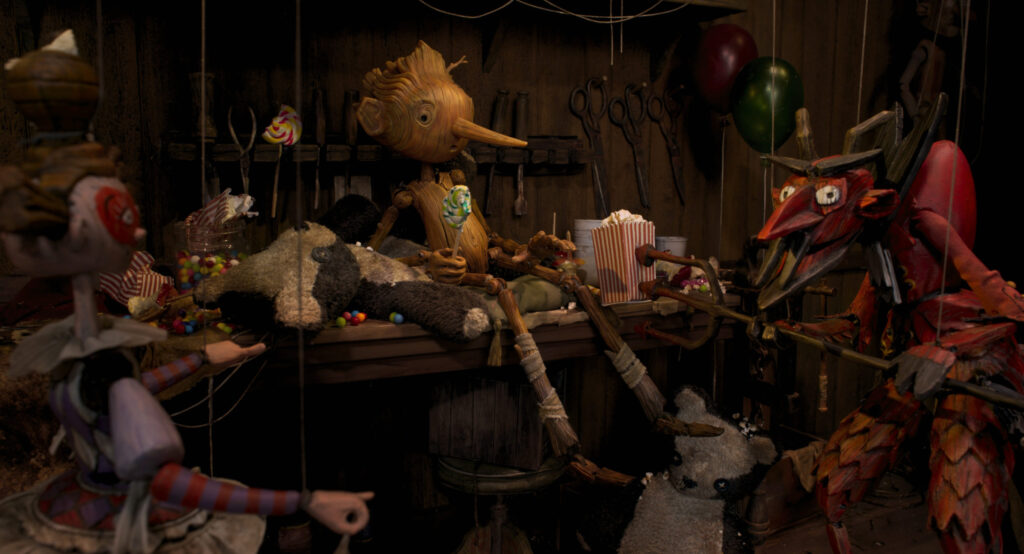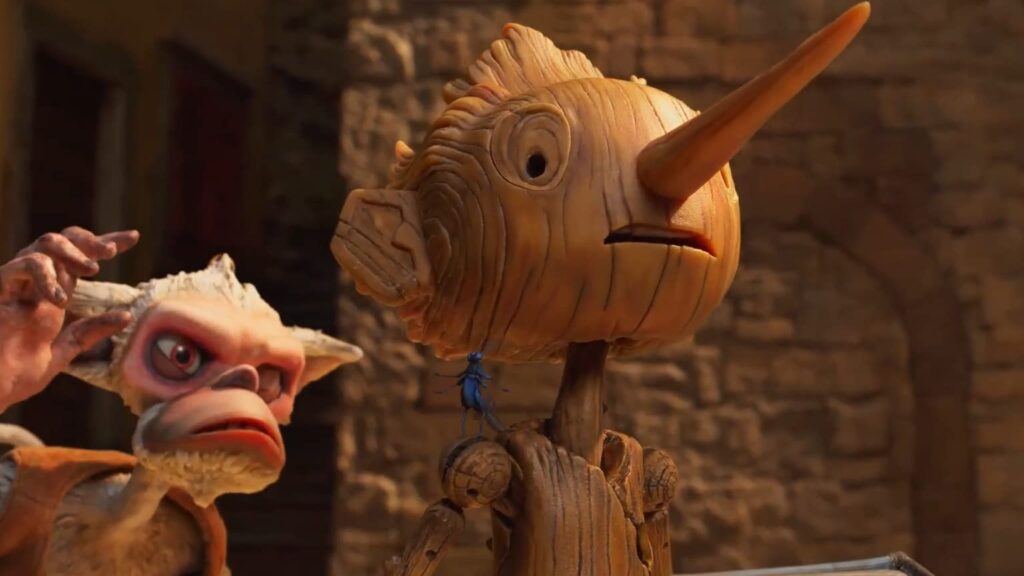If you take Netflix’s new animated feature, Pinocchio, and boil it down to its fundamental purpose, it answers this question: “What if we took a beloved—or maybe not so beloved—childhood character, and put them in the darkest, most polar environment imaginable?”
Now, I and many other teenagers only know the story of Pinocchio as the sort of pop culture and metaphorical icon it’s evolved into—don’t tell lies, or there will be real consequences! The versions of the tale that have been told over and over again—Pinnochio at the carnival, Pinnochio and the dogfish—didn’t stand the test of time for me in the same way that, say, Cinderella does.
As a result, while I was watching, I found myself a bit distant from some of his mini-adventures especially toward the end. But that was overshadowed by Guillermo Del Toro and Mark Gustafson’s evolved take on the subject, complete with entirely new ideas, characters, and concepts.
I don’t know anything about animation, but plenty of times, the striking art made me audibly gasp. I can still vividly remember, as Gepetto carves the wood out of Carlo’s new shoe, the way the pieces clutter out and disintegrate in a way that doesn’t match wood behavior at all. But at the same time, it is probably the only way to show wood sculpting in this movie, given the artsy, magical atmosphere.

Credit: Netflix
Getting introduced to all these wondrous animation effects early on in the movie, during Pinnochio’s coming-to-life and the multiple environment switches, made it feel a bit…reductive, I guess?…when the climax of the movie all happened in one place and tried to rely heavily on emotional dialogue. I mean, if that’s how the original Pinnochio story goes, then I can’t bash the filmmakers for trying to follow that direction, but it didn’t match up when certain standards had already been established in the beginning.
That being said, the dialogue was a bit underwhelming at times, especially in the songs. It’s wrong to compare this movie to Moana, but hear me out: Moana’s music was well-timed and added to the story beyond the natural progression of dialogue. We wouldn’t get much out of a narrative list of Maui’s achievements, but when “You’re Welcome” starts playing, not only do we get that list in rhyme form, we also get the perfect sense of this character’s personality, motivations and even his fatal flaw—pride—which he then overcomes by the end of the movie.
The music in Pinocchio, however, felt forced. When songs started playing, it didn’t feel like they fit or they were needed. I thought the only useful song was the carnival one, for reasons that become evident later in the movie. Sometimes, they rhymed a word with itself and for some reason, that really irked me.
When I watch animations, I absolutely love hearing particularly majestic, mature or thoughtful lines of dialogue. Like in Moana, when the grandmother who dances by the water sings, “You are your father’s daughter…mind what he says but remember, you may hear a voice inside…Moana, that voice inside is who you are.” To reference a more related movie, Guillermo Del Toro’s beautiful Pan’s Labyrinth: “Arise my daughter…You have spilled your own blood rather than the blood of an innocent.”

But in Pinocchio, I don’t remember any strong pieces of dialogue. I couldn’t quite understand the lessons that the characters had learned; it felt like they hadn’t really gone full circle to reach such a conclusion. Even the unique advice Sebastian comes up with, I can’t fully buy into.
But, I’ve been focusing on aspects that I wished were better and neglecting everything that was incredible. These directors create another magical fantasy world for us to dive into, a world that is both off-putting and beautiful, creepy but mesmerizing, full of monsters and also kind-hearted, naive souls just learning the ways of life.
The darkness of this world pervades every scene in a sort of bittersweet ominous way, and viewers will quickly learn why. It was a unique and shocking choice to set Pinnochio’s story in this particular world—another aspect that, when revealed, made me gasp out loud. But then it’s worthwhile to watch these characters navigate the world and somewhat learn their own lessons along the way.
I recommend this movie, especially if you aren’t familiar with the whimsically majestic worlds of Del Toro. Prepare yourself for a darker storyline that—despite this movie being an animation based on a fairy tale—can be a bit gross and scary at times. Appreciate the dialogue as best as you can, and let yourself sink into the breathtaking animation. And be sure to watch the credits—the song isn’t particularly impressive, but the animations are adorable.
By May Sarin

